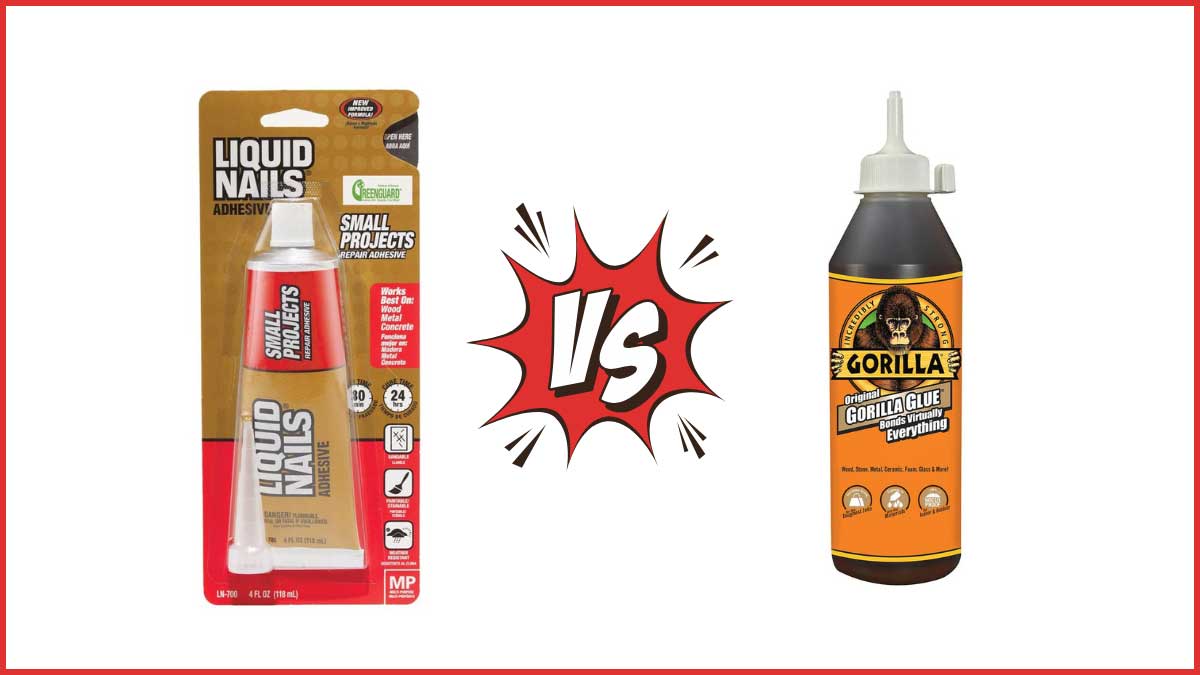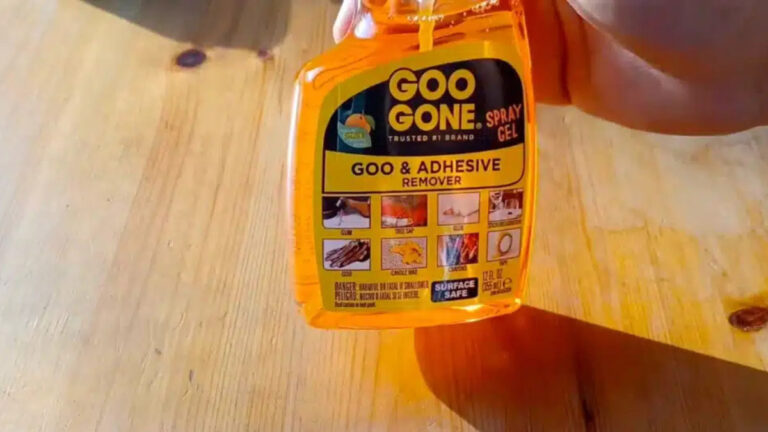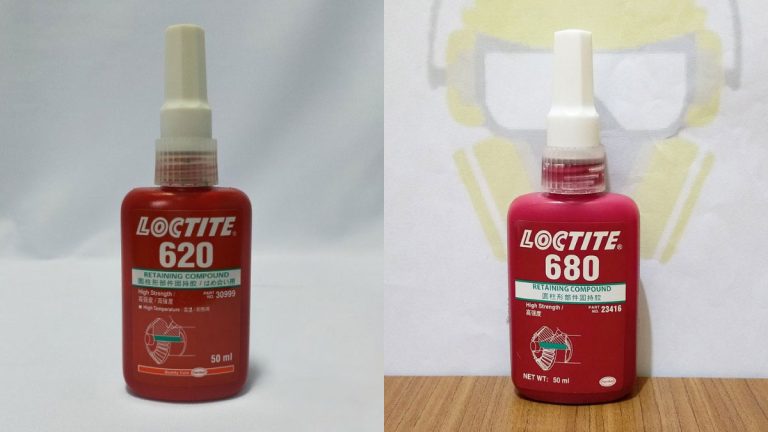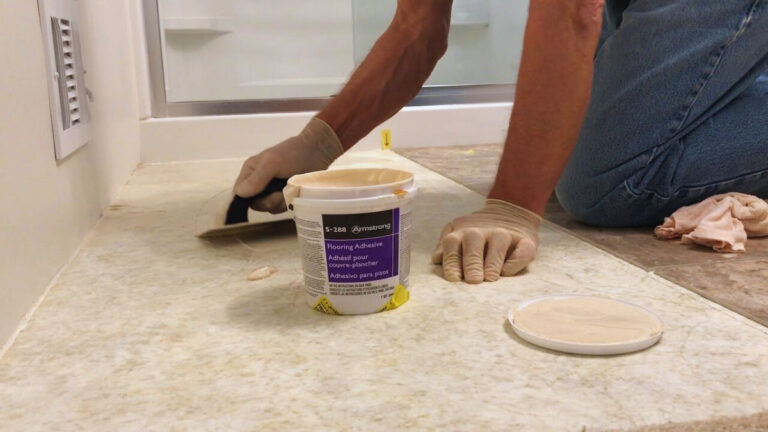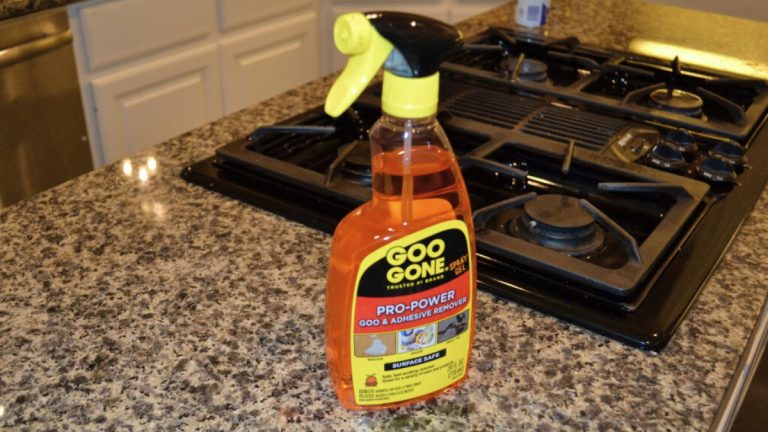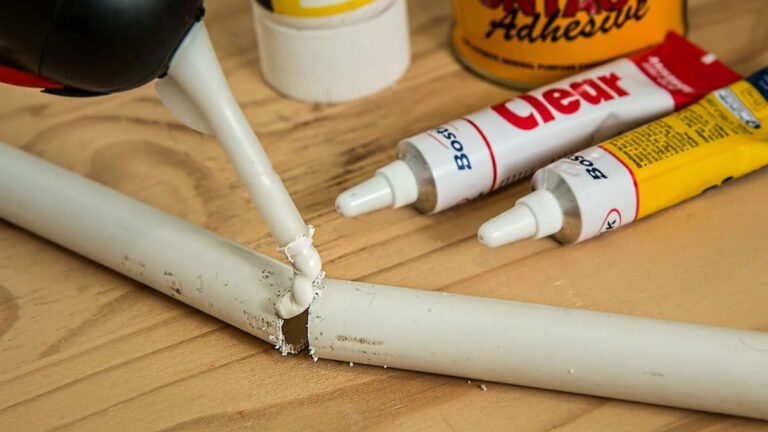Liquid Nails vs Gorilla Glue: Which Adhesive Is Best for Your Project?
Choosing the right adhesive can make or break your DIY project. When it comes to heavy-duty bonding, Liquid Nails and Gorilla Glue are two of the most popular options you’ll encounter. But which one should you pick?
Both adhesives promise strong, lasting bonds, but they excel in different areas. Whether you’re working on a construction project or a simple home repair, understanding the strengths and weaknesses of each can save you time and frustration. Let’s jump into what makes Liquid Nails and Gorilla Glue unique so you can make an well-informed choice for your next project.
Key Takeaways
- Distinct Properties: Liquid Nails is a construction adhesive that works well on clean, dry surfaces, while Gorilla Glue is a polyurethane adhesive activated by moisture, expanding as it cures.
- Ideal Applications: Liquid Nails is suitable for heavy-duty projects involving wood, metal, or concrete, while Gorilla Glue excels in bonding dissimilar surfaces like wood to plastic or tile to metal.
- Setting Time: Liquid Nails requires about 15 minutes to set, whereas Gorilla Glue needs around 2 hours, although some formulas bond quickly for immediate handling.
- Ease of Use: Liquid Nails offers a simpler, cleaner application, while Gorilla Glue may be messier due to its expanding nature.
- Durability and Versatility: Liquid Nails is water-resistant and ideal for stable, heavy-duty conditions; Gorilla Glue is versatile across various materials and performs well in extreme environmental conditions.
Liquid Nails Vs Gorilla Glue: An Overview
Choosing the right adhesive for your DIY projects hinges on understanding the distinct properties and applications of Liquid Nails and Gorilla Glue.
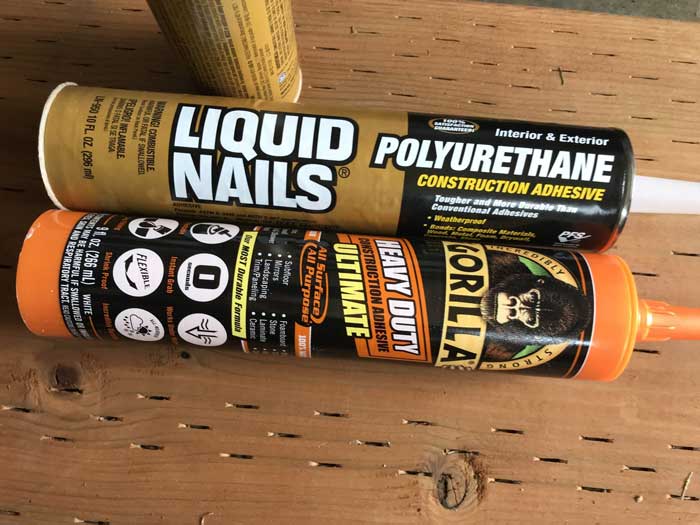
Type of Adhesive and Activation
- Gorilla Glue: This polyurethane glue activates with moisture. It foams and expands as it dries, beneficial for filling gaps but potentially messy. To use, dampen one surface with water before applying the glue to the other, holding the surfaces tightly for two hours.
- Liquid Nails: This construction adhesive is water-resistant and doesn’t require moisture activation. Apply it to clean, dry surfaces and hold the surfaces together for about 15 minutes.
Application and Materials
- Gorilla Glue: Ideal for bonding dissimilar surfaces like tile to wood or plastic to ceramic.
- Liquid Nails: Works well for construction projects where a strong, lasting bond between heavy materials like wood, metal, or concrete is needed.
| Feature | Gorilla Glue | Liquid Nails |
|---|---|---|
| Type | Polyurethane | Construction adhesive |
| Activation | Requires moisture | No moisture needed |
| Setting Time | Approximately 2 hours | Approximately 15 minutes |
| Application Surfaces | Dissimilar surfaces (e.g., tile to wood, plastic to ceramic) | Heavy materials (e.g., wood, metal, concrete) |
| Appearance | Foams and expands | Remains stable |
| Water-Resistance | High once cured | Water-resistant |
| Ease of Use | May be messy due to expansion | Easy and clean |
Choosing between Liquid Nails and Gorilla Glue depends on your project’s specific needs. Use Gorilla Glue for materials that expand or require a moisture-activated bond. Opt for Liquid Nails in construction scenarios for a stable, water-resistant adhesive.
Key Differences
Choosing the right adhesive for your project can make a significant difference in the outcome. Both Liquid Nails and Gorilla Glue have their own unique properties and uses. Understanding these key differences will help you select the right adhesive for your specific needs.
Composition
Liquid Nails
Liquid Nails, a construction adhesive, consists of a mixture of polymers and solvents. It’s designed to be water-resistant, making it suitable for various construction projects. This adhesive typically works well on clean, dry surfaces.
Gorilla Glue
Gorilla Glue, a polyurethane-based adhesive, activates with moisture. As it cures, it foams and expands, filling gaps to create a strong bond. Its composition allows it to bond effectively with wood, plastic, and metal.
Strength
Liquid Nails
Liquid Nails provides a strong bond, particularly effective for heavy-duty construction jobs. It works best under stable conditions on clean, dry surfaces. But, it may not perform optimally in high heat or when bonding dissimilar surfaces.
Gorilla Glue
Gorilla Glue stands out for its high strength and versatility. It can bond dissimilar surfaces and withstand various environmental conditions. The flexible bond it forms is durable and reliable in both high and low temperatures.
Versatility
Liquid Nails
Liquid Nails is most effective for projects requiring a water-resistant adhesive. It’s a top choice for construction applications involving heavy materials. Examples of use include framing, paneling, and molding installations.
Gorilla Glue
Gorilla Glue’s versatility allows it to bond different materials, such as wood, plastic, and metal. Its expanding nature makes it ideal for uneven surfaces. It’s suitable for both indoor and outdoor use, handling a variety of environmental conditions.
| Feature | Liquid Nails | Gorilla Glue |
|---|---|---|
| Composition | Polymers and solvents | Polyurethane |
| Activation | No moisture required | Moisture-activated |
| Bond Strength | Strong on clean, dry surfaces | High strength, versatile |
| Suitable Surfaces | Stable conditions, heavy-duty construction | Dissimilar surfaces, varied environments |
| Key Uses | Framing, paneling, molding installations | Bonding wood, plastic, metal |
Understanding these key differences can aid in selecting the adhesive that best matches your project needs, whether you’re working with heavy construction materials or bonding dissimilar surfaces.
Performance Factors
Understanding the performance factors of Liquid Nails and Gorilla Glue helps you choose the best adhesive for your project. Consider these key elements to make an well-informed choice.
Application Ease
- Liquid Nails: Applying Liquid Nails may be more challenging, especially if surfaces aren’t clean and smooth. It doesn’t “grab” and hold pieces instantly, requiring clamping for 24 hours to ensure a strong bond. This can be cumbersome for quick tasks or vertical surfaces.
- Gorilla Glue: Gorilla Glue is generally easier to apply, particularly when using a caulk gun. But, it expands as it cures, which may be problematic in some situations. For instance, the foaming action could be unsuitable for tight or flush joints.
Drying Time
- Liquid Nails: Drying time ranges from 24 hours to a week, depending on humidity and temperature. This extended curing period can be a disadvantage for projects needing fast completion. Conditions that can affect drying time include high humidity and low temperatures, slowing the process significantly.
- Gorilla Glue: Some Gorilla Glue formulas create a bond in as little as 30 seconds, although full curing takes a few hours. This makes it ideal for quick fixes and projects requiring immediate handling. Rapid initial bonding helps in scenarios where clamping isn’t feasible.
Durability
When considering durability, each adhesive has strengths suited for different applications.
- Liquid Nails: Known for its durability in heavy-duty construction, Liquid Nails is effective on clean, dry surfaces and resists water, making it suitable for outdoor projects and high-moisture areas like bathrooms. Its polymer and solvent composition offers long-term stability in harsh conditions.
- Gorilla Glue: Gorilla Glue provides robust bonding even on dissimilar surfaces, thanks to its moisture-activated polyurethane formula. It expands to fill gaps, ensuring a strong hold. This makes it versatile for various materials such as wood, plastic, and metal, performing well in variable environmental conditions.
| Factor | Liquid Nails | Gorilla Glue |
|---|---|---|
| Application Ease | Requires clamping, challenging on non-smooth surfaces | Easier with caulk gun, expands as it cures |
| Drying Time | 24 hours to a week (humidity, temperature) | Initial bond in 30 seconds, full cure hours |
| Durability | Great for heavy-duty, water-resistant tasks | Strong on dissimilar surfaces, moisture-activated |
Understanding these performance factors helps you select the right adhesive based on project-specific needs. Liquid Nails excels in heavy-duty, water-resistant applications, while Gorilla Glue offers quick bonding and versatility across different materials.
Use Cases
Indoor Projects
Liquid Nails and Gorilla Glue serve different purposes for indoor projects, making them suitable for various applications based on project needs.
Liquid Nails
- Sub-flooring: Best for securing sub-floors. Ensures a firm attachment that withstands loads.
- Paneling: Ideal for attaching paneling to walls. Handles heavy-duty jobs.
- Gap-Filling: Effective for loose joints. Offers a strong, durable bond.
Gorilla Glue
- Dissimilar Surfaces: Bonds materials like wood to metal or tile to plastic. Suitable where different surface types are involved.
- Detailed Work: Often used in crafts or repairs. Handles smaller, precise tasks.
- Moisture-Activated: Needs one dampened surface. Activate and expand as it cures.
Outdoor Projects
Selecting the right adhesive is crucial for outdoor projects due to variable environmental conditions.
Liquid Nails
- Water-Resistant Bonds: Designed for durable exterior applications. Ideal for outdoor fixtures.
- Strong Adhesion: Used for heavy materials. Holds construction elements firmly.
- Quick Setting: Fast application with around 15 minutes hold time. Efficient in outdoor settings.
Gorilla Glue
- Weather-Resistant: Effective in variable weather conditions. Useful for materials exposed to rain or sun.
- Versatile Use: Suitable for wood, plastic, ceramic, and metals. Flexible across different surfaces.
- Expansion: Fills gaps upon curing. Ensures a comprehensive bond.
Comparative Data
Here’s a table highlighting key characteristics:
| Adhesive | Active Ingredient | Activation Method | Setting Time | Ideal for |
|---|---|---|---|---|
| Liquid Nails | Polymers & Solvents | Dry surfaces | 15 minutes | Heavy-duty projects |
| Gorilla Glue | Polyurethane | Moisture (one surface dampened) | 2 hours | Dissimilar surfaces |
Summary
Choosing between Liquid Nails and Gorilla Glue depends on the specific requirements of your project. Use Liquid Nails for heavy-duty, water-resistant applications, and Gorilla Glue for moisture-activated, versatile bonding across different materials.
Considerations For Specific Conditions
When choosing between Liquid Nails and Gorilla Glue, it’s crucial to consider specific conditions to ensure optimal performance and durability.
Weight-Bearing Capacity
- Liquid Nails: Designed for heavy-duty applications, Liquid Nails offers exceptional weight-bearing capacity. It’s commonly used in construction and home repair projects because it can handle significant loads.
- Gorilla Glue: While Gorilla Glue, especially the polyurethane type, provides strong bonding, it’s more suited for projects requiring clamping or surfaces that aren’t perfectly flat. Its expanding foam can fill gaps but may not always be ideal for high weight-bearing scenarios.
Temperature Range
- Liquid Nails: Performs well across a variety of temperatures but can lose adhesion in extreme heat. Suitable for stable temperature environments to maintain its strong bond.
- Gorilla Glue: Tends to perform reliably across various temperature ranges and doesn’t lose adhesion as easily in extreme conditions. Ideal for projects exposed to fluctuating temperatures.
| Adhesive | Temperature Tolerance | Ideal Range | Extreme Conditions |
|---|---|---|---|
| Liquid Nails | Moderate | 32°F to 120°F | Loses adhesion in extreme heat |
| Gorilla Glue | Wide | -40°F to 200°F | Maintains adhesion |
- Liquid Nails: Excels on clean, dry surfaces and provides a strong bond with heavy materials like wood, metal, and masonry. It’s less versatile on non-porous or irregular materials.
- Gorilla Glue: Versatile across a wide range of surfaces including wood, plastic, metal, stone, and ceramic. Its ability to expand and fill gaps makes it ideal for bonding dissimilar materials and irregular surfaces.
When selecting the right adhesive for your project, review these specific conditions to ensure that you choose the optimal product for durability and performance.
Conclusion
Choosing between Liquid Nails and Gorilla Glue depends on your project’s specific requirements. If you’re tackling heavy-duty tasks that demand water resistance and quick setting times, Liquid Nails is your go-to adhesive. On the other hand, Gorilla Glue excels in bonding dissimilar materials and performs well under varying environmental conditions.
Both adhesives offer unique advantages, so understanding their strengths and limitations will guide you to the best choice. Whether you’re working indoors or outdoors, considering factors like application ease, drying time, and durability will ensure your project’s success.
Frequently Asked Questions
What are the main differences between Liquid Nails and Gorilla Glue?
Liquid Nails is a construction adhesive with strong bonds for heavy materials and fast setting times. It doesn’t require moisture and is ideal for framing and molding. Gorilla Glue is a polyurethane adhesive that needs moisture to activate. It expands as it dries and is perfect for bonding dissimilar surfaces like wood, plastic, and metal.
Which adhesive has a faster setting time, Liquid Nails or Gorilla Glue?
Gorilla Glue generally sets faster, bonding in as little as 30 seconds and curing fully in 24 hours. Liquid Nails, on the other hand, may take 24 hours to a week to fully cure, depending on conditions.
Can Gorilla Glue be used for outdoor projects?
Yes, Gorilla Glue is weather-resistant and performs well in various environmental conditions, making it suitable for outdoor projects. Its ability to bond dissimilar surfaces adds to its versatility.
Is Liquid Nails water-resistant?
Yes, Liquid Nails is water-resistant and is designed for heavy-duty tasks like securing sub-flooring and attaching paneling. It performs particularly well in indoor applications but can also be used outdoors.
Which adhesive is better for bonding dissimilar materials?
Gorilla Glue is better suited for bonding dissimilar materials such as wood, metal, and plastic. Its moisture-activated formula and expansion properties make it effective for these applications.
How does temperature affect the performance of Liquid Nails and Gorilla Glue?
Liquid Nails performs well in moderate temperatures but can lose adhesion in extreme heat. Gorilla Glue maintains its bond across a wider temperature range, making it suitable for fluctuating conditions.
Do I need to clamp materials when using Liquid Nails?
Yes, you should clamp materials when using Liquid Nails for optimal bonding strength. It may require clamping for up to 24 hours, depending on the project and environmental conditions.
Is Gorilla Glue suitable for heavy-duty projects?
Gorilla Glue is versatile and strong, but Liquid Nails is generally better suited for heavy-duty projects due to its formulation for construction tasks and water resistance.

